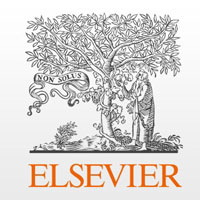| مشخصات مقاله | |
| ترجمه عنوان مقاله | تاثیر رنگ و خودبینی در ارتباطات قانع کننده |
| عنوان انگلیسی مقاله | The effect of color and self-view priming in persuasive communications |
| انتشار | مقاله سال ۲۰۱۹ |
| تعداد صفحات مقاله انگلیسی | ۱۷ صفحه |
| هزینه | دانلود مقاله انگلیسی رایگان میباشد. |
| پایگاه داده | نشریه الزویر |
| نوع نگارش مقاله |
مقاله پژوهشی (Research Article) |
| مقاله بیس | این مقاله بیس میباشد |
| نمایه (index) | Scopus – Master journals – JCR |
| نوع مقاله | ISI |
| فرمت مقاله انگلیسی | |
| ایمپکت فاکتور(IF) |
۵٫۳۵۲ در سال ۲۰۱۸ |
| شاخص H_index | ۱۵۸ در سال ۲۰۱۹ |
| شاخص SJR | ۱٫۶۸۴ در سال ۲۰۱۸ |
| شناسه ISSN | ۰۱۴۸-۲۹۶۳ |
| شاخص Quartile (چارک) | Q1 در سال ۲۰۱۸ |
| رشته های مرتبط | روانشناسی، علوم ارتباطات اجتماعی |
| گرایش های مرتبط | روانشناسی عمومی، روابط عمومی |
| نوع ارائه مقاله |
ژورنال |
| مجله / کنفرانس | مجله تحقیقات کسب و کار-Journal of Business Research |
| دانشگاه | University at Albany, State University of New York, School of Business, Albany, NY 12222, United States of America |
| کلمات کلیدی | خودمحور، ارتباط رنگ ها، انطباق، ازمون ارتباطی ضمنی، جریان پردازش |
| کلمات کلیدی انگلیسی | Self-construal، Color associations، Congruency، Implicit Association Test (IAT)، Processing fluency |
| شناسه دیجیتال – doi |
https://doi.org/10.1016/j.jbusres.2019.01.022 |
| کد محصول | E12175 |
| وضعیت ترجمه مقاله | ترجمه آماده این مقاله موجود نمیباشد. میتوانید از طریق دکمه پایین سفارش دهید. |
| دانلود رایگان مقاله | دانلود رایگان مقاله انگلیسی |
| سفارش ترجمه این مقاله | سفارش ترجمه این مقاله |
| فهرست مطالب مقاله: |
| Abstract ۱٫ Introduction ۲٫ Conceptual development ۳٫ Experimental materials and methods ۴٫ General discussion Appendix A. Study 1 Stimuli Appendix B. Study 2 Stimuli Appendix C. Study 2 Screenshots Appendix D. Study 3 Stimuli Appendix E. Study 4 Stimuli References |
| بخشی از متن مقاله: |
| Abstract
We examine how the associative properties of the color red relate to an independent self-view, and their impact on advertising message processing and persuasion. In study 1, using explicit measures, we demonstrate that red is associated with independence-focused words. In study 2, employing an Implicit Association Test, we further examine the congruence of independence and red, and observe an identical pattern of results. In study 3, we test these findings in a social marketing context (diabetes testing). We find that participants’ behavioral intentions to comply with an advertisement’s advocated position are enhanced when red ad backgrounds are matched with an independent self-construal prime. In study 4, these findings are replicated in a more typical consumer behavior context (restaurant patronage), and indicate that processing fluency and perceived ad believability are mediators of the observed effects on participants’ behavioral intentions. We conclude by discussing the practical and theoretical implications of our work. Introduction Color plays an important role within a variety of marketing functions (Labrecque, Patrick, & Milne, 2013) and is the subject of a growing number of empirical investigations (Elliot & Maier, 2014). Extant research indicates that color plays a pivotal role in generating attention (Lee & Barnes, 1989), influencing consumer perceptions (Mehta & Zhu, 2009), and impacting purchase behavior (Bagchi & Cheema, 2013). Relevant to the current investigation, color has also been shown to influence consumers’ responses to advertising (Gorn, Chattopadhyay, Yi, & Dahl, 1997; Kareklas, Brunel, & Coulter, 2014). For example, several advertising studies have examined how color affects advertising information processing (e.g., Gorn et al., 1997; Lichtlé, ۲۰۰۷; Pucinelli, Chandrashekaran, Grewal, & Suri, 2013), as well as message persuasion (e.g., Chou & Wang, 2016; Gerend & Sias, 2009; Voss, Corser, McCormick, & Jasper, 2018). Nonetheless, in a recent review of color and psychological functioning, Elliot (2015) notes that existing theoretical and empirical work on the topic remains in an early stage of development. In particular, while several studies have explored color effects in advertising, the majority of this work lacks a strong theoretical foundation to account for the observed effects. |
